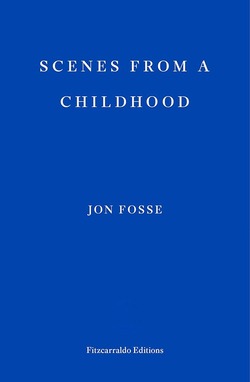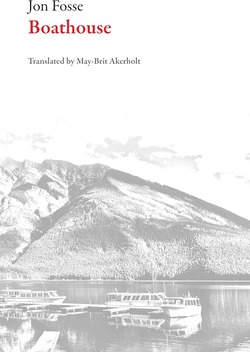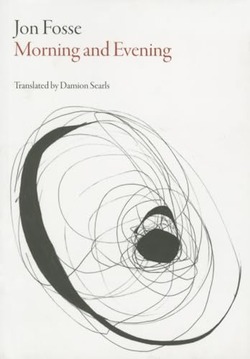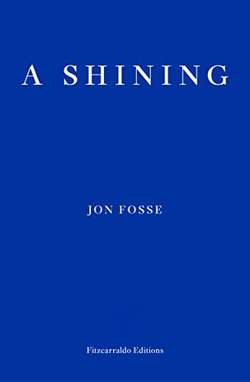Scenes From a Childhood (tr: Damion Searls, 2018) is a selection of Jon Fosse’s short fiction that spans 1987 through 2013. It contains five pieces that showcase the Nobel laureate’s work, and each is distinct in its way, although they are all unmistakably the work of this very singular writer. The pieces were ‘translated and selected’ by Damion Searls, though he doesn’t come forward to offer his reasons for choosing them over the many other untranslated works by Fosse.
The titular Scenes From a Childhood (1994) opens the book and is series of around forty vignettes with a loose trajectory. Some are incredibly brief, taking only a few lines, while the longest occupy two pages. In these snippets, there are many mentions of guitars, death, and epiphanies as the world is opened up to young minds. In the afterword it’s made clear that while these events happened, they have been fictionalised, so are perhaps not fully representative of Fosse’s early days, even if they can be said to run parallel.
How It Started (1987, tr: 2013) feels like one of the vignettes stretched out to short story length and while as a story I found it nothing remarkable – it’s a coming-of-age tale told in a flash – there were recognisable experiences in its plainspoken account of burgeoning sexuality, as the young man squirms at being both enthralled and embarrassed by his attraction to a girl at a youth group.
If How it Started was straightforward, then follower Dreamt in Stone (2013) provides a more challenging affair. Its narrator appears to have suffered some form of mental collapse, but the story is almost oblique with its metaphors of an avalanche and stones, that are constantly rebuilt and collapsing. Whatever ails the fragile narrator, there’s optimism in there with further transport-led metaphors.
The real value of the book comes in And Then My Dog Will Come Back To Me (1991), a rage-driven narrative about a man who sets out to kill another man for shooting his dog. It’s the chunkiest piece and grips from start to finish, noirish and hypnotic, as our narrator’s mind collapses under the weight of his hysteria, to the point that we’re not sure what happened actually happened.
Closer, Little Sister (2000), feels like a stylistic bookend to the opener. Originally published as a children’s book, it’s the most openly descriptive of Fosse’s pieces, and, given that he alludes to having a younger sister, similar in age, in the afterword, it could well be interpreted as not just a story but another selection of scenes from childhood. Again, like in How It Started, there are moments that any child may recognise, though I can’t imagine many children being enthralled by it.
While the dog novella is worth the price of admission alone, there’s much to like in the other pieces, although at some moments, especially in the childhood vignettes, there doesn’t feel like any depth or greater knowledge imparted from reminiscing, and the prose hews so closely to childhood at times that they could have been written by a child. So it’s a mixed bag of pieces, designed to introduce Fosse, but I’m glad I read other works first as much of these wouldn’t have incentivised me further.



